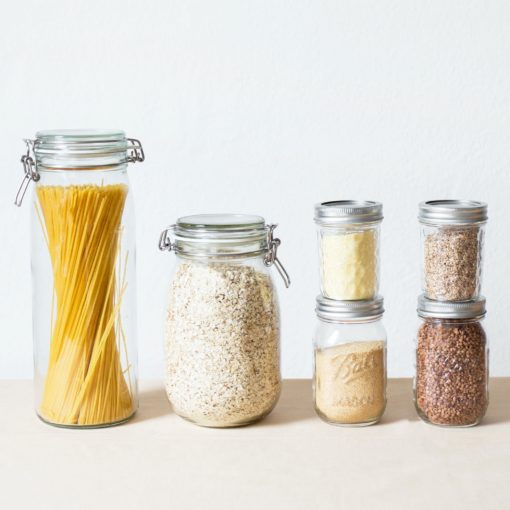Did you know that plastic bags are on average used for only 20 to 30 minutes before being disposed of?
The shift in our lifestyle over the last century has seen the boom of single-use plastics items as it was more convenient than dealing with reusable items. However, what we have uncovered over the last few decades is that we are wasting precious ressources to produce these items which don’t have a very long lifetime and we also don’t even properly manage this waste, even in Japan. That is why we urgently need to reduce our single-use plastics consumption.
Inspired by my discussion with Robin Lewis, the co-founder of mymizu, you will find below 5 tips to reduce single-use plastics in Japan.
Let me know in the comments below your best plastic-free tips for Japan. I am looking forward to seeing your recommendations!
1/ Bring your own bag – マイバッグ – when going shopping
Whether you are going to buy food, books or clothing, always bring your own bag in order to avoid using a plastic bag – ビニール袋 or レジ袋 – at the cashier. If you want to make sure you are not forgetting it when you leave home, keep it close to your door or in your backpack.
The ones I prefer are textile tote bags as you can easily wash them and they are very durable. However, don’t go into a tote bag frenzy by buying tones of them!
Until recently, the plastic bags at the cashier were free, but since the 1st of July 2020, you now have to pay for them. It is not a huge amount but maybe enough to raise awareness to people about this issue and change our habits!
2/ Use your refillable bottle – マイボトル
As Robin Lewis – the co-founder of mymizu – mentioned during our conversation, Japan is one of the countries with the purest water. A few decades ago, people were used to drinking tap water, but consumption habits have changed over time and many people today prefer buying a plastic bottle from one of the numerous vending machines and convenience stores, especially when they are on the go.
There is an easy and more economical solution which is to bring a refillable bottle with you wherever you go. Just refill it at the water fountain – if they have any – at your workplace, or ask the restaurant you are having lunch at to do so. If you are out and about, simply use mymizu app to locate a free refill spot in your area. Their app covers a wide range of places such as public water fountains, restaurants and cafes that will let you refill for free and even spring water spots!
While some of you might not like the idea, it is also worth mentioning that tap water in public restrooms is safe to drink in Japan – unless stated otherwise but this is very rare – so you can also simply refill your bottle here.
From Robin experience working with Kobe city government, tap water in Japan has to pass a lot more controls and tests than bottled water, so if you have any worry about its quality, be reassured!
Around 340g of CO2 equivalent are created when purchasing bottled water from a vending machine compared to 6g only when you refill your bottle.
3/ Refuse oshibori – おしぼり
Almost every time you go to a restaurant in Japan, you will be presented with an oshibori -おしぼり – which is a refreshing towel to be used to clean your hands before eating. In the past, these used to be wet towels that were presented to guest but in most places nowadays, there are single-use synthetics wipes wrapped in plastic.
When these are given to you, give them back to the waiter kindly mentioning that they are not necessary (けっこうです), and go wash your hands instead!
4/ Use reusable food wrap instead of plastic cling film or aluminium foil
Another great tip Robin gave during his talk, was also to use reusable beeswax wrap instead of plastic cling film to wrap ingredients, cover leftovers etc. There are several small companies offering that kind of products in Japan but I personally recommend you the ones from aco wrap as they are made in Japan using organic cotton.
If you are vegan, you can also find vegan beeless wraps. Ecolife, a small brand based in Hokkaido, is making some. You can also use cloth dish covers or simply use a towel or dish cloth that is then easy to clean in the washing machine.
There are also some great tutorials out there if you are up for the challenge of making your own beeswax or beeless food wraps.
5/ Avoid single-use umbrella covers
On rainy days, you will usually find single-use plastic umbrella covers at the entrance of main buildings and department stores. People then discard these covers as soon as they get out of the building meaning they end up being used only for a couple of minutes…
This waste can actually be easily avoided if you buy a reusable umbrella cover here or here for example and use it instead. If you forget it at home, keep the disposable plastic cover and reuse it all throughout the day trying to make the most of its use. Instead of picking up a new disposable plastic cover, you can also grab one from the discarded ones.
Sometimes we end up forgetting our reusable items at home, in order to avoid that, always keep them in your bag or close to your door so you don’t forget them when leaving!



2 thoughts on “5 tips to avoid single-use plastics in Japan”
We do all the 5 things above and more. I use plates to cover bowels to store food over night in the fridge. The biggest challenge in Japan is package for everything: Every item are over packed and always look so pretty. It’s daily!
Well done! Plates are a great way to go too indeed. I agree, it is challenging!